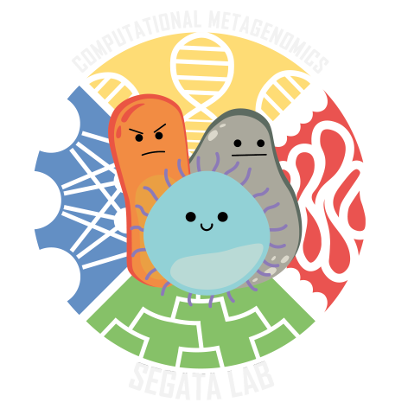Studying Eubacterium rectale using genomes from metagenomes
Eubacterium rectale is one of the most prevalent human gut bacteria, but its diversity and population genetics are not well understood because large-scale whole-genome investigations of this microbe have not been carried out. Here, we leverage metagenomic assembly followed by a reference-based binning strategy to screen over 6,500 gut metagenomes spanning geography and lifestyle and reconstruct over 1,300 E. rectale high-quality genomes from metagenomes. We extend previous results of biogeographic stratification, identifying a new subspecies predominantly found in African individuals and showing that closely related non-human primates do not harbor E. rectale . Comparison of pairwise genetic and geographic distances between subspecies suggests that isolation by distance and co-dispersal with human populations might have contributed to shaping the contemporary population structure of E. rectale . We confirm that a relatively recently diverged E. rectale subspecies specific to Europe consistently lacks motility operons and that it is immotile in-vitro, probably due to ancestral genetic loss. The same subspecies exhibits expansion of its carbohydrate metabolism gene repertoire including the acquisition of a genomic island strongly enriched in glycosyltransferase genes involved in exopolysaccharide synthesis.
Data repository and supporting material
The >1300 genomes from metagenomes, manually curated genomes and isolate genomes used
- MAG sequences (fasta files) and metadata: Genomes
For comments and questions please contact Nicolai Karcher or Nicola Segata
Citation
If you find the resource useful in your research, please cite our paper:
Genome Biology
1 CIBIO, University of Trento, Trento, Italy.
2 Department of Agriculture, University of Naples, Naples, Italy.
3 Fondazione Edmund Mach, S. Michele all’Adige, Italy.
4 Rowett Institute, University of Aberdeen, Aberdeen, UK.
5 Free University of Bozen-Bolzano.
6 IATA-CSIC, Valencia, Spain.
7 EMBL, Heidelberg, Germany.
8 University of Bath, Bath, UK.
9 Institute for Mummy studies, Eurac Research, Bolzano, Italy.
10 Harvard T.H. Chan School of Public Health, Boston, MA, USA.
11 The Broad Institute, Cambridge, MA, USA.
* Corresponding authors


